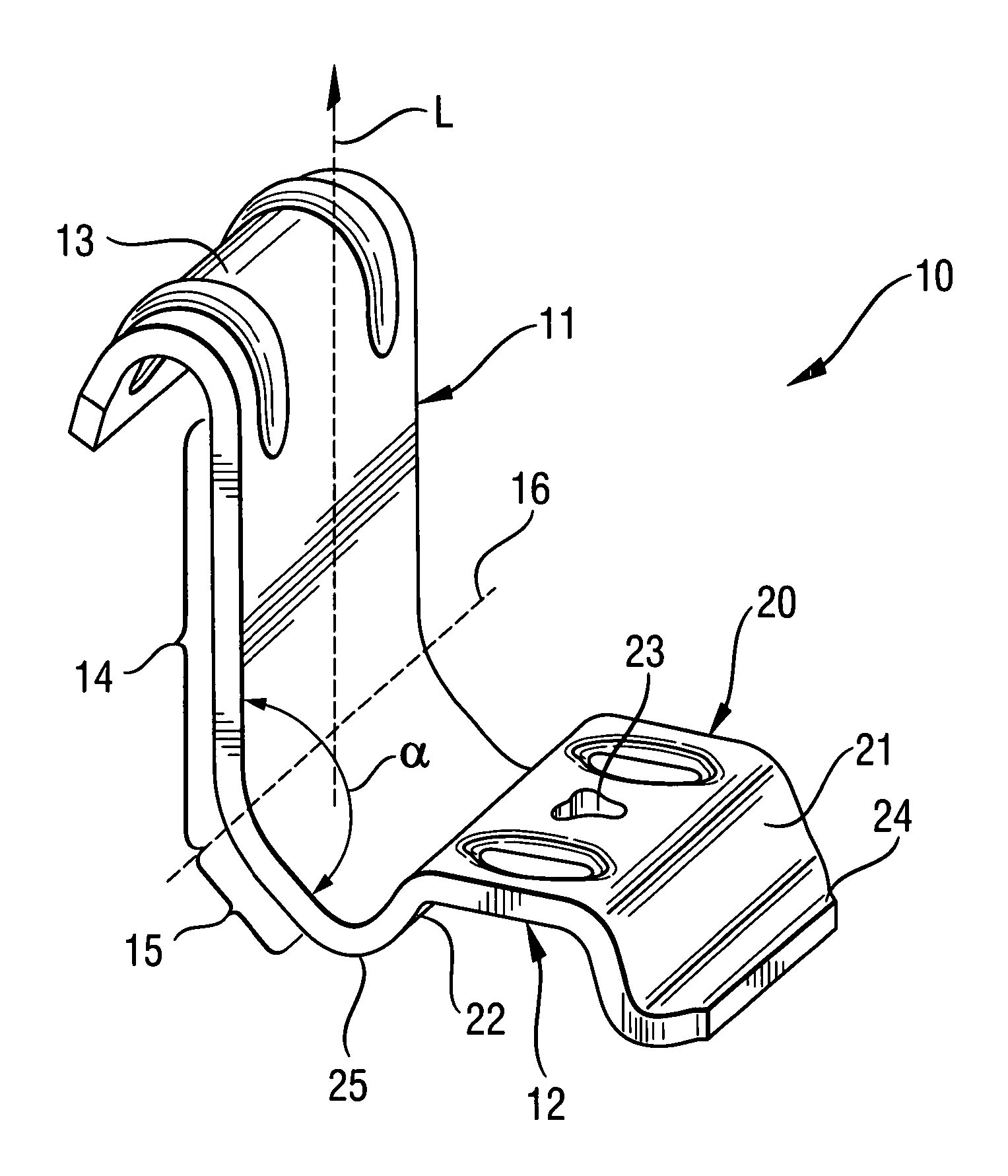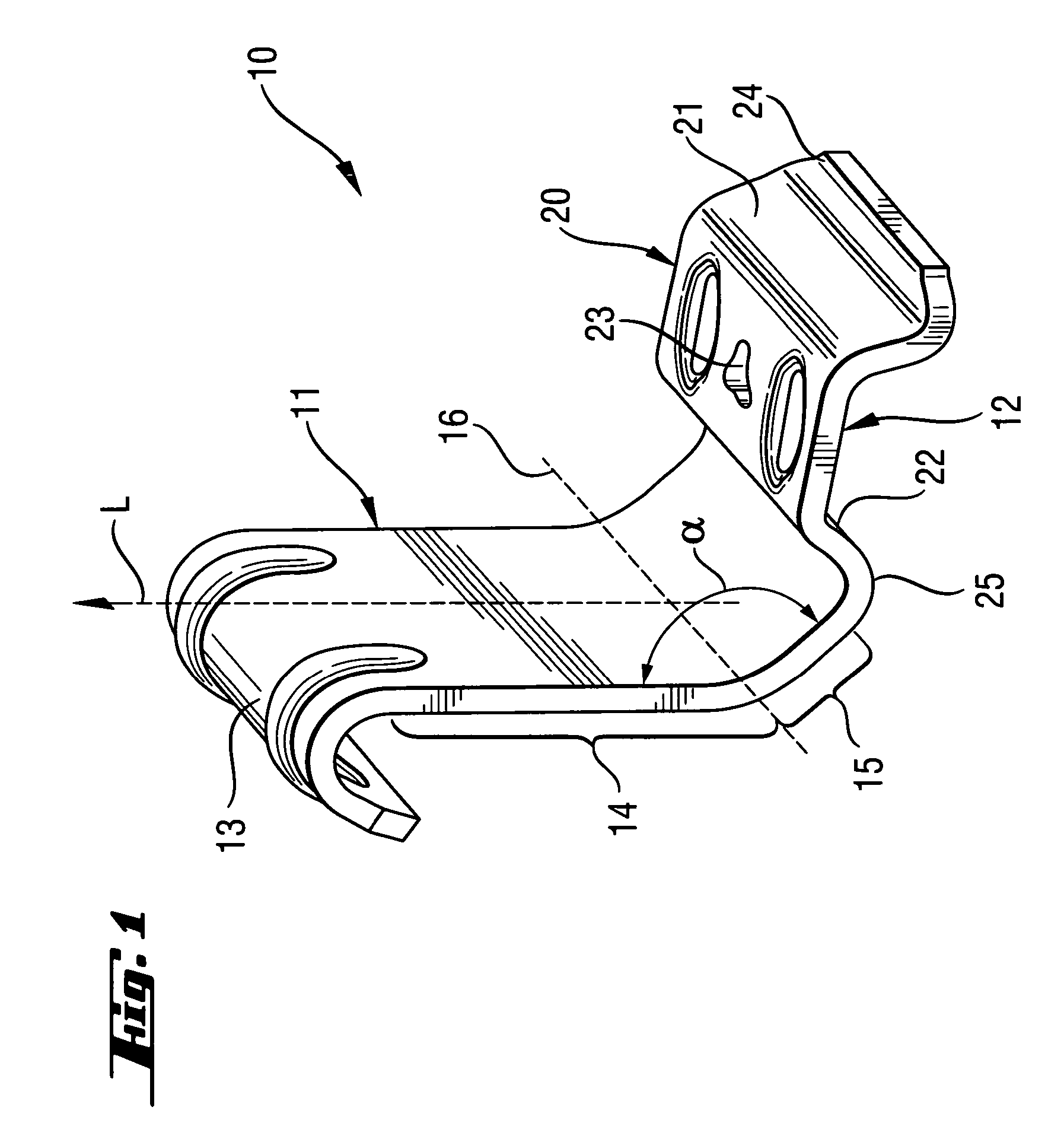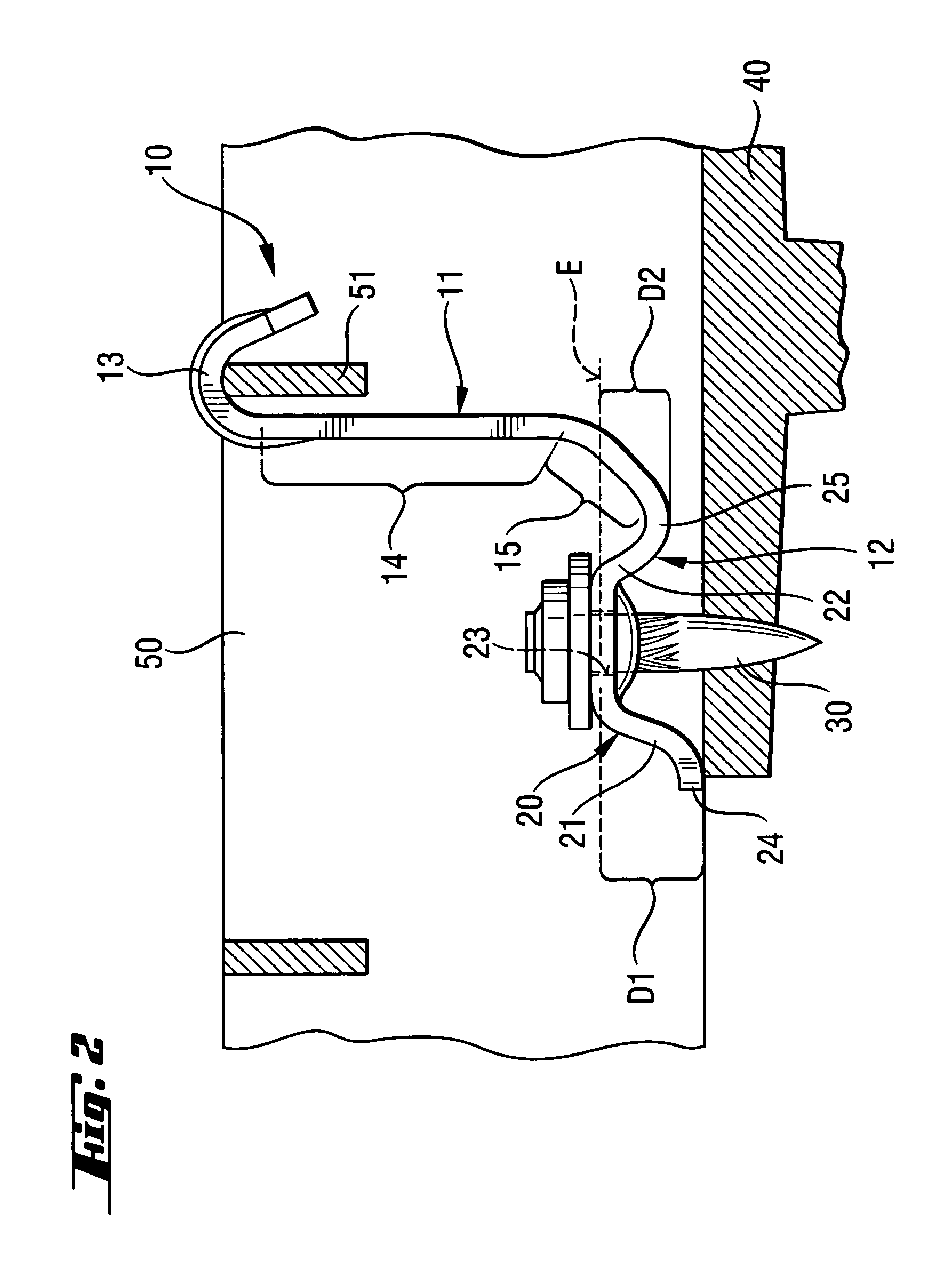Grid-holding element
a technology of holding element and grid, which is applied in the direction of building scaffolds, candle holders, sewerage structures, etc., can solve the problems of not being able to directly mount, using a hand-held setting tool, and being unable to secure a grid to a support or constructional component without using some auxiliary means, so as to achieve the optimal shape of the holding element, increase the tolerance range, and increase the height difference
- Summary
- Abstract
- Description
- Claims
- Application Information
AI Technical Summary
Benefits of technology
Problems solved by technology
Method used
Image
Examples
Embodiment Construction
[0019]A grid-holding element 10 according to the present invention, which is shown in FIGS. 1-2, has a first leg 11 and a second leg 12 which are arranged approximately at a right angle to each other. The first leg 11 has a hook-shaped free upper end 13 for engaging around a strut 51 of a grid 50 or another element to-be-secured on a support 40. The first leg 11 further has first and second surface sections 14 and 15 that extend to each other in the initial, not secured position of the holding element 10, at an angle α of about 138°. However, in the embodiment shown in the drawings and having two surface sections 14, 15, a greater or smaller angle α that can vary in a range from 125° to 150° can be provided. The first leg 11 extends substantially in a longitudinal direction L that is directed substantially perpendicular to a bending axis 16 along which both surface sections 14, 15 abut each other.
[0020]The second leg 12 forms a saddle-shaped attachment section 20 that has a through-...
PUM
 Login to View More
Login to View More Abstract
Description
Claims
Application Information
 Login to View More
Login to View More - R&D
- Intellectual Property
- Life Sciences
- Materials
- Tech Scout
- Unparalleled Data Quality
- Higher Quality Content
- 60% Fewer Hallucinations
Browse by: Latest US Patents, China's latest patents, Technical Efficacy Thesaurus, Application Domain, Technology Topic, Popular Technical Reports.
© 2025 PatSnap. All rights reserved.Legal|Privacy policy|Modern Slavery Act Transparency Statement|Sitemap|About US| Contact US: help@patsnap.com



